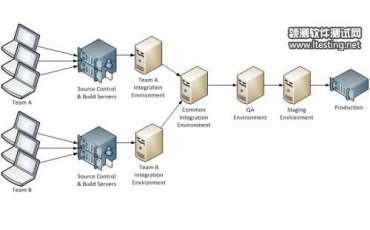ORACLE在HP-UX下的系列问题处理(15)
Oracle:“start x print servers”消息禁用打印问题描述
在Oracle升级过程中,我的系统启动并显示下面的信息:
start x print servers
自从看到这个信息后,我就一直无法打印任何东西。我进入系统管理管理器(SAM)查看打印机信息,但屏幕挂起。我还尝试恢复打印机配置,但屏幕继续挂起。
如何解决这个问题?
配置信息
操作系统 - HP-UX
版本 - 11.0
硬件系统 - HP9000
系列 - K570
应用程序 - Oracle
解决方法
按照下面的步骤解决你的问题:
1. 进入目录/var/spool/lp。
2. 执行“ls”命令,检查是否有FIFO和SCHEDLOCK文件。
3. 执行“lpstat -r”,看一看sched是否正在运行。
注:如果sched正在运行,则执行lpshut终止sched进程。
4. 执行“rm FIFO SCHEDLOCK Toutputq *lock.”命令。
注:删除适用于你的系统的文件。
5. 执行“> outputq”命令,清除outputq文件中的内容。
6. 执行“> log”命令,清除日志文件中的内容。
7. 执行“ps -ef|grep lp”命令。
注:对所有活动的lpsched继承执行kill -9。
8. 执行“lpsched -v”,重新启动lpsched进程。
9. 执行“more log”命令。
10. 执行“lp -dprinter ./file”。
.........following with all English text ....
Problem Description
During my Oracle upgrade, my system booted and printed this message:
start x print servers
I have not been able to print anything since I saw this message.
I went into the System Administration Manager (SAM) to view the printer
information, and the screen hung. I also tried to restore the printer
configuration, and the screen continued to hang.
How can I resolve this problem?
Configuration Info
Operating System - HP-UX
Version - 11.0
Hardware System - HP9000
Series - K570
Application - Oracle
Solution
Use these steps to resolve your problem:
1. Change directories to /var/spool/lp.
2. Execute the 'ls' command to check for the existence of FIFO and
SCHEDLOCK files.
3. Execute 'lpstat -r' to see if sched is running.
Note: If sched is running, execute lpshut to stop the sched process.
4. Execute the 'rm FIFO SCHEDLOCK Toutputq *lock.' command.
Note: Delete the files that apply to your system.
5. Execute the '> outputq' command to clear the contents of the outputq file.
6. Execute the '> log' command to clear the contents of the log file.
7. Execute the 'ps -ef|grep lp' command.
Note: Do a kill -9 on all active lpsched processes.
8. Execute 'lpsched -v' to re-start the lpsched process.
9. Execute the 'more log' command.
10. Execute 'lp -dprinter ./file'.





